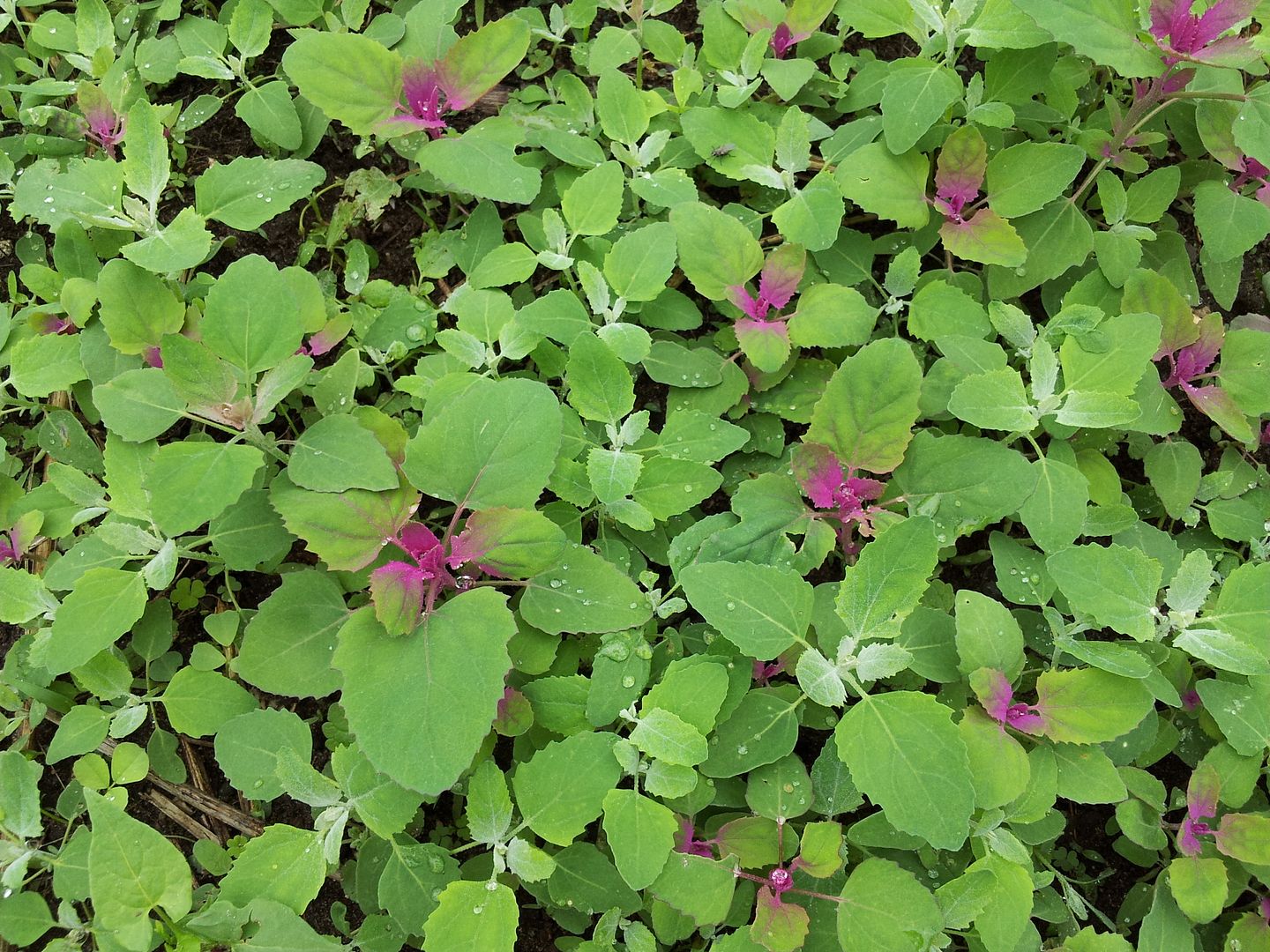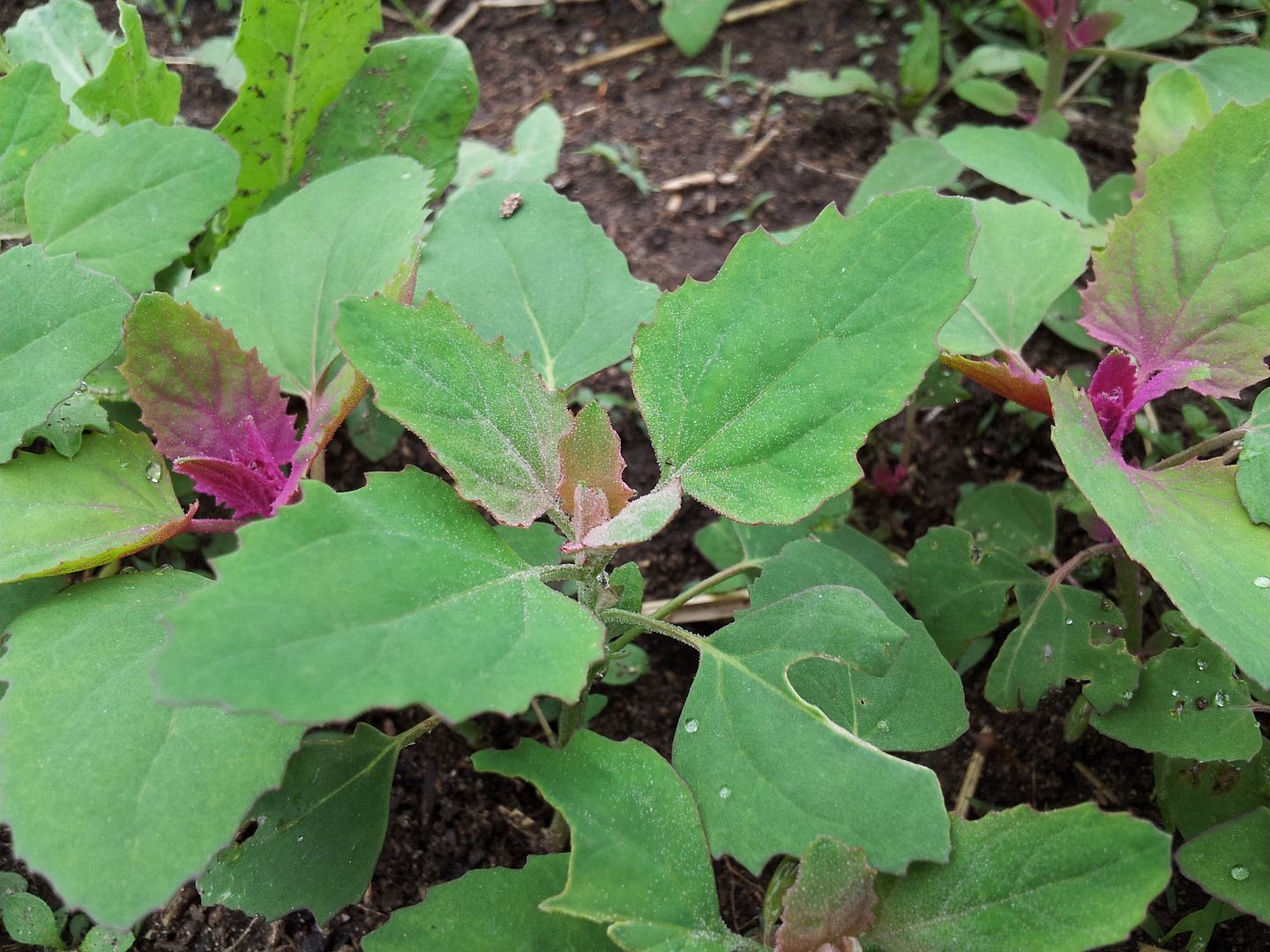
The bright pink one is C. gigantium and the silvery one is C. album.
Chenopodium album, also known as lamb's quarters, grows itself though I have to say I have less of the silvery stuff than my buddy the gaudy pink green. This is perhaps because I tend to pull out the latter.
And here is what I think is Chenopodium giganteum x album.** Perhaps it's a pale variant of Magenta Spreen or perhaps it's a true cross. I have a couple patches here and there. They are more vigorous - i.e., gigantic then lamb's quarters. I shall name it rosy quarters.

See the dusky rose in among the shouting magenta?
***
Chenopods contain a number of food plants such as:
Good King Henry, Chenopodium bonus-henricus - perennial with edible shoots
Strawberry Spinach, Chenopodium capitatum - green with beet like 'berries'
Quinoa, Chenopodium quinoa - yummy grain
Huauzontle, Chenopodium nuttaliae- grown for its edible broccoli like flower heads
Magenta Spreen, Chenopodium giganteum - delicious and highly colourful spinach substitute.
Lamb's Quarter, Chenopodium album - the well known weed of disturbed soil and foraged or found green.
* Apparently I'm not the only one. The wiki article on tree spinach also mentions it as 'a high quality green manure.'
** Okay so according to the internet, C. giganteum is sometimes listed as a subspecies of C. album but then again sometimes not. As it is, I'm not entirely clear on the taxonomy. If you are really curious, you could wade through this Molecular differentiation of Cheopodium album complex and some related species using ISSR profiles and ITS sequences.

1 comment:
I eat it, it's like super spinach....so tasty.
Post a Comment